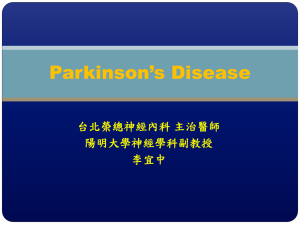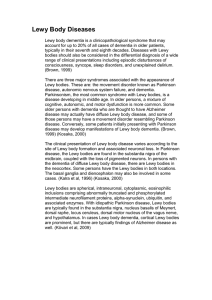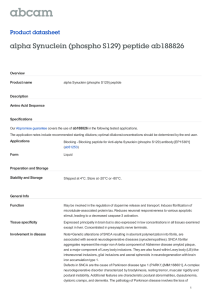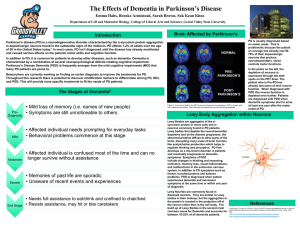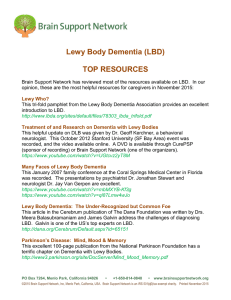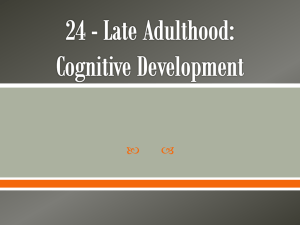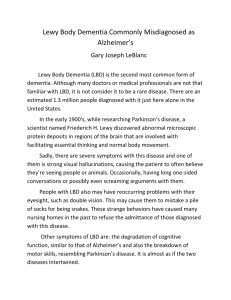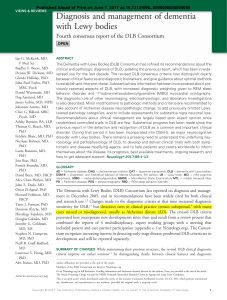Parkinson Disease
advertisement
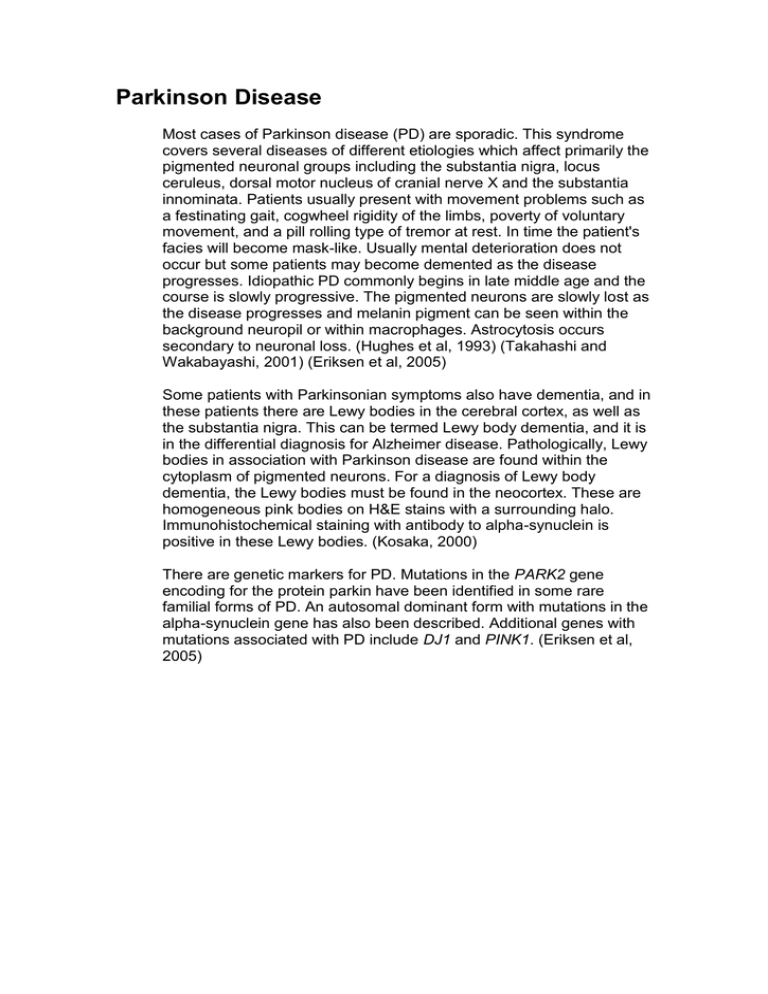
Parkinson Disease Most cases of Parkinson disease (PD) are sporadic. This syndrome covers several diseases of different etiologies which affect primarily the pigmented neuronal groups including the substantia nigra, locus ceruleus, dorsal motor nucleus of cranial nerve X and the substantia innominata. Patients usually present with movement problems such as a festinating gait, cogwheel rigidity of the limbs, poverty of voluntary movement, and a pill rolling type of tremor at rest. In time the patient's facies will become mask-like. Usually mental deterioration does not occur but some patients may become demented as the disease progresses. Idiopathic PD commonly begins in late middle age and the course is slowly progressive. The pigmented neurons are slowly lost as the disease progresses and melanin pigment can be seen within the background neuropil or within macrophages. Astrocytosis occurs secondary to neuronal loss. (Hughes et al, 1993) (Takahashi and Wakabayashi, 2001) (Eriksen et al, 2005) Some patients with Parkinsonian symptoms also have dementia, and in these patients there are Lewy bodies in the cerebral cortex, as well as the substantia nigra. This can be termed Lewy body dementia, and it is in the differential diagnosis for Alzheimer disease. Pathologically, Lewy bodies in association with Parkinson disease are found within the cytoplasm of pigmented neurons. For a diagnosis of Lewy body dementia, the Lewy bodies must be found in the neocortex. These are homogeneous pink bodies on H&E stains with a surrounding halo. Immunohistochemical staining with antibody to alpha-synuclein is positive in these Lewy bodies. (Kosaka, 2000) There are genetic markers for PD. Mutations in the PARK2 gene encoding for the protein parkin have been identified in some rare familial forms of PD. An autosomal dominant form with mutations in the alpha-synuclein gene has also been described. Additional genes with mutations associated with PD include DJ1 and PINK1. (Eriksen et al, 2005)

